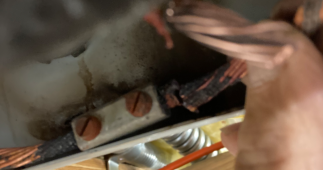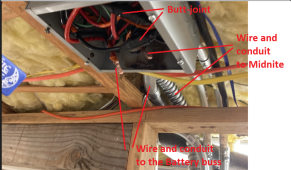lherman-cs
New Member
- Joined
- Feb 9, 2022
- Messages
- 8
Hi all, this is my first time designing a solar off-grid system. I did a lot of research system and have sketched up my plan in DrawIO. Would greatly appreciate anyone to scrutinize the design! The design goal is to create a safe system and NEC 2017 code compliant.

* I am especially shaky with grounding and lightning protection
* Do I need to have SPDs to protect my system from lightning surges? Isn't earth grounding supposed to solve this?
* In the design, I have ~125 feet grounding wire in the ground. I'm concerned that this is too long for a grounding wire that it becomes an ineffective lightning protection.
* Do I have to have a circuit breaker between solar panels and solar charge controller?
Great resources that helped me to get to this version:
* Awesome grounding docs from FilterGuy (thanks a lot!): https://diysolarforum.com/resources/grounding-made-simpler-part-1-ac-houshold-grounding.157/
* Amazing video about SPD fundamentals:
* Will's EG4 setup: https://www.youtube.com/watch?v=mzZR6SWonrY
* and many others...
My equipment spec sheets (attached for everybody convenience):
* Inverter: EG4 6500 EX-48
* Battery: EG4 Lifepower4 48v nominal @100ah
* Solar Panel: Ureco FAK445C8G

* I am especially shaky with grounding and lightning protection
* Do I need to have SPDs to protect my system from lightning surges? Isn't earth grounding supposed to solve this?
* In the design, I have ~125 feet grounding wire in the ground. I'm concerned that this is too long for a grounding wire that it becomes an ineffective lightning protection.
* Do I have to have a circuit breaker between solar panels and solar charge controller?
Great resources that helped me to get to this version:
* Awesome grounding docs from FilterGuy (thanks a lot!): https://diysolarforum.com/resources/grounding-made-simpler-part-1-ac-houshold-grounding.157/
* Amazing video about SPD fundamentals:
* and many others...
My equipment spec sheets (attached for everybody convenience):
* Inverter: EG4 6500 EX-48
* Battery: EG4 Lifepower4 48v nominal @100ah
* Solar Panel: Ureco FAK445C8G




